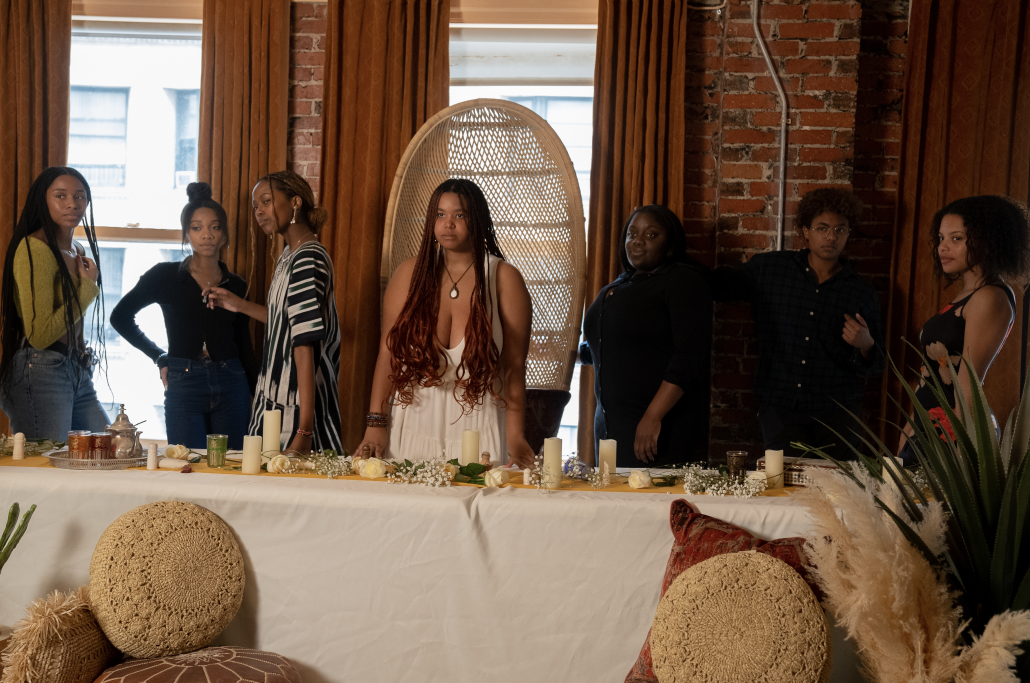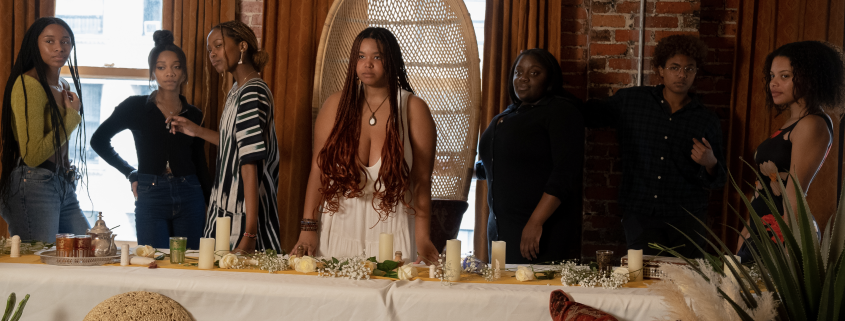Students find Black community in the arts

The Black Art Collective is a student-run organization dedicated to the connecting, developing and spotlighting of Black creatives and Black creative projects.
Uniting Black students for creative and artistic development, BAC has four main purposes.
“First would be the production of art … Our second thing is that we have workshops and educational events … Then, the third thing is social events … Our fourth [purpose] would be that we’re currently working on creating a database of Black creatives on campus,” said Jordan Freeman, the president of BAC and a sophomore majoring in cinematic arts, film and television production.
On Jan. 21, the organization debuted its first workshop in Burbank, California. The workshop was an advanced camera workshop taught by Elias Ginsberg, a Los Angeles-based director of photography, adjunct professor at USC and alumnus of the USC School of Cinematic Arts.
“So our camera workshop was our first event that identified the education disparity in film, being that minorities and Black people don’t usually get the access to use higher-quality cameras,” said Tracey Gibbs, the chair of film and television for BAC and a sophomore majoring in cinematic arts, film and television production.
Transportation was provided for participants and the workshop was free for both members and non-members of the Black Art Collective, with donations encouraged for non-members.
Freeman began organizing leadership and goals for BAC in Fall 2022. At the start, they reached out to fellow Black creatives when assembling the leadership for the organization.
Gibbs explained how, last semester, she shared a class with Freeman and how that was where she expressed her interest in Freeman’s idea and subsequently got involved with the organization.
“Jordan was talking to me a lot about it in a class we had last semester. Just about the racial disparities that they saw within our film and television program at USC. They were like ‘I’m gonna do something about it,’ and I was like ‘Well, when you do something about it, let me know. I’ll help you. I’ll be there,’” Gibbs said. “Then, they had this idea to start the collective and really identify the educational disparities between Black people at USC and want to expand it to all of the art forms that we could.”
Other board members shared similar stories of expressing interest in BAC and its mission before joining.
“Jordan texted me one day saying that she wanted to talk about starting a new organization that was geared towards Black people, Black creatives, and instantly I was interested … I think it’s because in the back of my mind, I’d always wanted something like this here at USC and I didn’t know how to put it into words,” said Neema Muteti, the co-theater chair of BAC and a freshman majoring in musical theater.

Autumn Bryant, the social chair of BAC and a sophomore majoring in cinematic arts, film and television production, was thrilled when she was approached with the idea. She said she was glad Freeman approached her with this idea and that she couldn’t believe it hadn’t been explored sooner.
“I got the same text from Jordan about her thoughts on creating this organization. I’m in the same film cohort with Jordan and Tracey, so I already knew them very well … I was super, super excited to be a part of it. And as they were explaining it, I realized how necessary the organization is and I think that’s what is so exciting about it,” Bryant said.
Before coming up with the idea for BAC and organizing the board, Freeman remarked on her own time at USC and how it informed her mission to start the organization.
“When I first came to USC, I assumed that being at the prestigious film school would be the great equalizer between all the creatives there; we’d all have access to fantastic equipment, we’d all get personalized feedback from our teachers and that it’d be more of an even playing field regardless of where we came from,” Freeman said.
However, Freeman said they noticed how Black students were assumed to be less competent than their non-Black peers, leading Black filmmakers to not get hired for projects. Freeman emphasized that outside of class is where cinematic arts students get their “onset” education, the cornerstone of a cinematic arts education.
“I thought it would just be more beneficial to invest into our own communities, build up our own creatives, give them the technical skills and give them the resources so that way we can all come up together rather than the mentality of being the first to do something and then extending the ladder behind you,” Freeman said.
Throughout the interview, BAC’s board emphasized that despite the cinematic background of many of its board, BAC was determined to connect Black artists across disciplines and create projects.
“I think, through our own personal conversations and friendships and connections, we’ve kind of come to the consensus that one thing that most of the Black creatives on campus have in common is that we feel like we don’t know one another,” Bryant said. “Especially for Jordan, she decided to create this as an easy and accessible way for Black creators on campus to meet each other and create amazing projects.”
The organization plans to produce a play (or musical), film and a music showcase per semester. Additionally, Freeman said BAC wants to collaborate with other Black affinity groups in the production of these films and showcases.
“For example, our music showcase, which is organized by Tayler Somerville, our music chair, will be co-produced by the Black Student Assembly,” Freeman said.
Looking to the future, Bryant expressed their excitement about the reception of BAC.
“I think we’ve had such amazing feedback. And, honestly, it’s so motivating,” Bryant said. “Jordan, especially, but like everyone, put a lot of effort and time into making sure that we were all prepared and organized with what our goals and intentions were.”
At the heart of BAC is community, and creating a safe space for Black creatives is an essential step in supporting Black students. According to Gibbs, the feedback she’s heard and the attention that BAC has received supports that.
“The opportunities that are being offered with our organization are getting a lot of recognition from other people around campus,” Gibbs said. “I think they’re seeing it as a safe space where they can also thrive and learn as well.”

